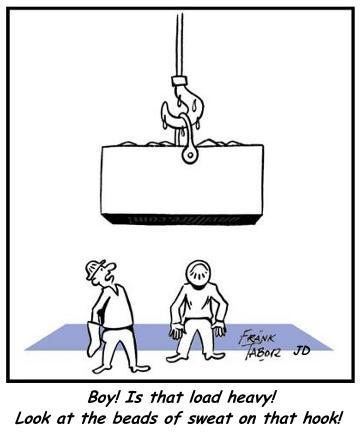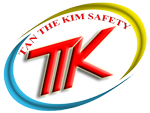How Chain Hoists Work?
There are three types of chain hoist. Differential, Lever Ratchet and Hand chain.
The most important thing to remember is that heavy items have mass and mass equals energy. It may not be obvious but you know if you drop something heavy on your foot it will hurt. But it may do more than hurt. An anvil, swage block or milling vise dropped on one’s foot could break numerous bones, disable and cause considerable expense.
There are three types of chain hoist. Differential, Lever Ratchet and Hand chain.
The most important thing to remember is that heavy items have mass and mass equals energy. It may not be obvious but you know if you drop something heavy on your foot it will hurt. But it may do more than hurt. An anvil, swage block or milling vise dropped on one’s foot could break numerous bones, disable and cause considerable expense.

There are three types of chain hoist. Differential, Lever Ratchet and Hand chain.
The most important thing to remember is that heavy items have mass and mass equals energy. It may not be obvious but you know if you drop something heavy on your foot it will hurt. But it may do more than hurt. An anvil, swage block or milling vise dropped on one’s foot could break numerous bones, disable and cause considerable expense.
| Differential Hoists These use a continuous loop of chain and a double chain wheel at the top with different number of pockets on the two sides. The lower “hook” wheel has grooves to ride on the chain but no pockets. As the chain is pulled around the inner load loop gets smaller or larger by the difference in the number of pockets on the chain wheel (the differential). As the lifting loop gets shorter the hand loop gets longer and vise versa. This is a bit of an inconvenience but the mechanism is as simple as they get. Lever Ratchet Hoists These are small portable units with capacities up to 5 tons but the common ones are rated 1/2 or 1 ton. The ratchet handle operates simple gears that pull a short load chain. The load is supported by a disk type friction brake similar to an automotive clutch disk held by a paw and sprocket (ratchet). Lifting rotates the brake/clutch on the ratchet. Lowering releases the pressure on the brake via a multi-lead screw similar to a brake Bendix. Hand Chain Hoists (standard chain hoists) These operate like the ratchet hoists above except a chain wheel and loop of hand chain turns the gearing. A brake holds the load and a ratchet prevents the brake from rotating one direction. The chain wheel rides on a screw that loosens the brake when the chain is pulled in the lowering direction. Most have planetary gearing on the brake wheel. Chain hoists are made with straight pulls and compound pulls up to 10 tons or more. Chain hoist are made in steel, portable aluminium housings, spark proof materials and corrosion resistant materials. Common Features and Problems - High quality hoists have ball thrust bearings in the hook to allow rotating the load. - Load hooks have openings parallel to the back. Properly rated load hooks that have been overloaded will spring open and not be parallel. - The brakes in industrial duty hoists are large and sufficient to support the load. A two ton hoist has an 8″ to 10″ diameter brake. Small import 2 ton hoists have small 3 to 4 inch brakes that are patently dangerous. They will slip under partial load without operation then due to heat rapidly slip more. These are dangerous junk that have no place in a safe shop. Hoist Maintenance and Inspection Chain hoists are durable and long lasting. The only regular maintenance is inspection, cleaning and lubricating. Chains should be kept clean and rust free. There are only a few bearing points that require oiling but these often require dismantling the hoist. Depending the use this should be done once a year or two. Since these devices have gears it is important to keep them sand and grit free. To clean the gears requires dismantling. Afterwards they should be greased with a tacky high pressure lube like Never Seize or gear grease. Hoists that slip should be tagged “out of order” and repaired if possible. If not they should be scrapped. Chains that are worn, kinked or stretched should be replaced. Load chains have gently curved sides that when overloaded become straight and sometimes stiff to flex. Stretched, straightened chains should be scraped and replaced. Load chains on hoists that have been stretched will not run smoothly on their blocks. Snapping or popping chains are an indication of overloaded chains. Safety Factors and Testing Traditional European and North American load lifting equipment has always had significant safety factors. Most steel crane and hoist parts are rated to be loaded to a maximum of 10,000 PSI at 1.5 to 2 times the rated load. This allows almost all parts to be safely made of mild steel. But then the parts are often made of steels that have five to ten times the strength of mild steel thus having huge safety factors. These 15 to 20 to one safety factors are what allows load lifting equipment to snag or catch a dropping load and safely absorb the inertia of such over loading. These safety factors should never be assumed or taken advantage of. The basic 1.5 rating is the amount of test load that is periodically put on industrial cranes to test them. Private owners and small shops should also periodically inspect and test their equipment to full or 1.5x capacity and record the test. On our large 10 Ton crane a 30,000 pound test load was not often available but occasionally we would have large assemblies that we normally did not lift. We would take advantage of these occasions and carefully lift them a few inches, have folks in the shop witness the lift then carefully put the load down. One thing we would have to be wary of was that at test load conditions the crane bridge would deflect more than that 1/4″ or less and the trolley would try to roll to the center of the beam. The above applies to real honest industrial duty equipment. There is a LOT of imported junk on the market sold by the big discount tool houses. Many of these items have ZERO safety factor and are based on ultimate failure values rather than conservative engineering values. This means they break or fail without warning if overloaded. I’ve seen popular “2 ton” Taiwanese hoists that had chains 1/5th the size of American hoists with load brakes that could not support half the devices rated load. I’ve seen many hydraulic presses with frames advertising 30 TON capacity sporting 20 ton jacks that were clearly bent from overloading. I’ve also seen shop floor cranes with bent arms and faulty hydraulic cylinder valves that were difficult or nearly impossible to gently lower a load. None of these devices are built to conventional safety standards. They will not withstand common load tests and should be avoided at all costs. Hanging Hoists Hoists can be hung statically using a loop of chain or shackle. Movable hoists are hung on a trolley. In either case the support method should be rated for the capacity of the hoist. Trolleys should be hung on an appropriate beam. Crane or hoist beams are rated by deflection. Deflection should be 1/4″ or less at the middle of the beam when fully loaded. This rule does two things. At 1/4″ deflection trolleys do not roll down hill. At 1/4″ deflection the strain on most beams is well within a safe range. Calculating deflection can be daunting if you do not know how. You start with the beam specification (type, size, weight per unit length). Then look up the section modules and plug it into the equations. Engineering handbooks have some of the data, the AISC Steel Construction manual has data on almost all beams as well as deflection formulas. Some engineering programs have the information as well. One thing to remember about deflection is that it increases by the cube of the increase in length. So the span of the beam makes a huge difference. Hanging hoists from wood is difficult to rate. Hanging hoists from roof trusses can be rated roughly by the roof rating but is NOT included in codes and this is NOT an engineering recommendation. Use at your own risk! Low load utility building roofs are rated as low as 10 to 20 pounds per square foot. Standard structures are usually rated 30 to 40 pounds per square foot. Only in high snow load areas are roofs rated 50 to 50 pounds or more. If you take the area supported by a pair of trusses, say 20 by 4 feet, this is 80 square feet. Multiply by 20 and you have 1600 pounds. This is the total load those trusses may be expected to support including wind and snow. Add a third truss and you have 2400 pounds, a forth and its 3200 pounds. Your hoisting load should never be more than 50% of the rated load. If you are hanging a shop monorail from wooden trusses the lower joist should be doubled up for at least 50% of the span or more. Gluing, nailing and bolting is recommended. A wooden beam in the trusses above the crane rail can help spread the load and add strength to the whole. If you are hanging a short steel beam a longer wood beam will help spread the load across more trusses. A bridge truss perpendicular to the roof trusses will increase the roof strength as well as spread the load. Legal Code Approved Hoists To legally hang a hoist from a building is difficult and requires an engineering study and sign off. So the best way to legally set up a hoist is to avoid hanging it from the building. This is done two ways. One is to build a free standing hoist frame in the building, the other is to use a portable gantry with wheels. The fastest way is to purchase a commercial gantry that either runs on a smooth floor or angle iron tracks. |
